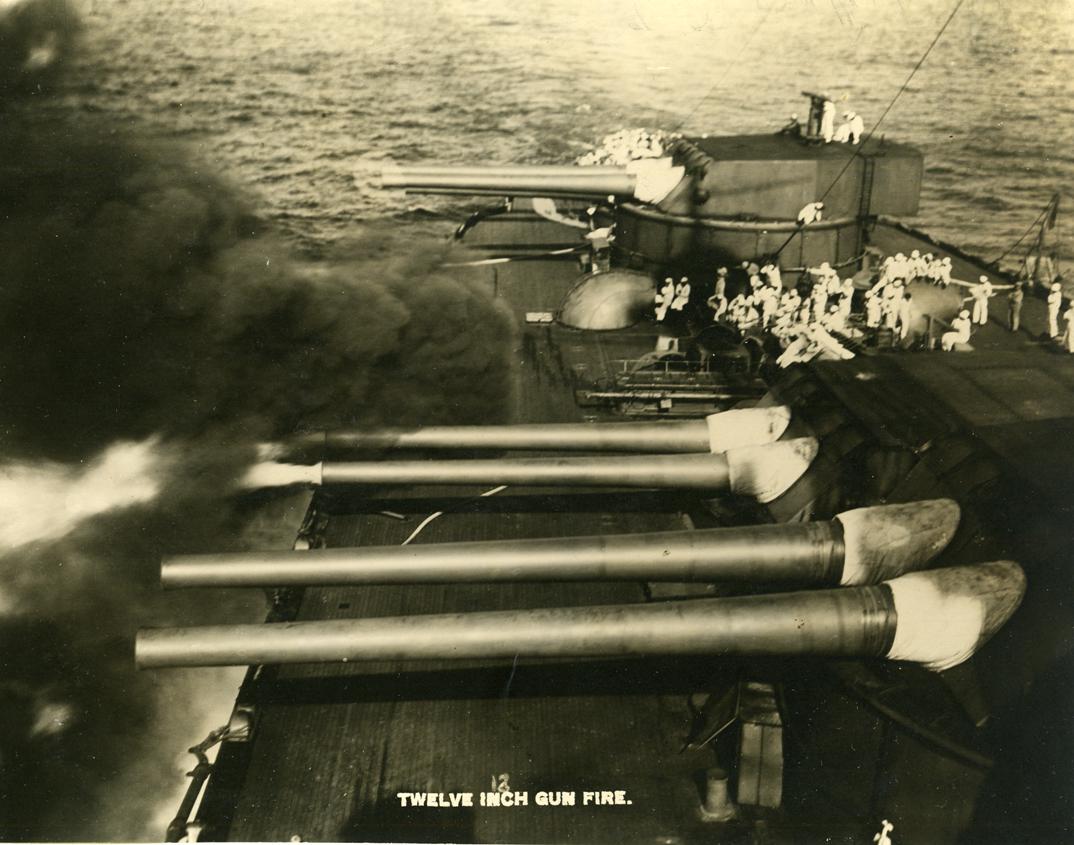
This gun probably had a longer continuous active service life in the USN than any other large caliber weapon, having first gone to sea aboard USS Wyoming (B-32) in 1912 and remaining in service until the destruction of USS Arkansas (BB-33) during the Bikini tests in 1946. This weapon was only slightly more powerful than the preceding 12"/45 (30.5 cm) Mark 5.
This gun ran up to 19 mods. Mods 0 to 3 were the original guns, all others were lined or relined guns. Most were constructed of liner, A tube, jacket, eight hoops and screw box liner with locking hoops and rings. Mod 3 had no liner, Mods 3, 7, 11 and 15 had five rather than eight hoops, Mod 5 was never built and Mods 11 to 19 had a slightly increased chamber size. Early Mods used the side-swinging Fletcher breech mechanism with Welin breech plugs. The later Mods 11 to 14 are listed as using down-swinging breech plugs which almost certainly used Smith-Asbury breech mechanisms.
At least one gun still exists and is on display at Fort Miles at Cape Henlopen, Delaware. See photograph below.
Actual bore length was 49.5 calibers.
The data that follows is specifically for the 12"/50 (30.5 cm) Mark 7 Mod 19 which was in service during World War II.
| Designation | 12"/50 (30.5 cm) Mark 7 |
|---|---|
| Ship Class Used On | Wyoming (B-32) class |
| Date Of Design | 1910 |
| Date In Service | 1912 |
| Gun Weight | 124,140 lbs. (56,310 kg) (including breech)
121,905 lbs. (55,296 kg) (without breech) |
| Gun Length oa | 607.25 in (15.424 m) |
| Bore Length | 594 in (15.087 m) |
| Rifling Length | 500.925 in (12.724 m) |
| Grooves | Mod 0: (72) 0.05 in deep (1.27 mm)
Mods 1, 3 and 19: (72) 0.075 in deep (1.90 mm) Others: N/A |
| Lands | N/A |
| Twist | Mod 0: Uniform RH 1 in 25
Mods 1, 3 and 19: Increasing RH 1 in 50 to 1 in 32 Others: Uniform RH 1 in 32 |
| Chamber Volume | 14,636 in3 (239.9 dm3) |
| Rate Of Fire | 2 - 3 rounds per minute |
- Wyoming is listed as having Mark 7 Mod 2 guns and Arkansas Mark 7 Mod 4 and Mark 7 Mod 6 guns at the start of World War II. In January 1945 Arkansas is listed as having Mark 7 Mod 15 to Mark 7 Mod 18 guns.
| Type | Bag |
|---|---|
| Projectile Types and Weights 1a | AP Mark 15 Mods 1 to 6 - 870 lbs. (394.6 kg)
Common - 870 lbs. (394.6 kg) HC Mark 16 Mods 1 and 2 - 740 lbs. (335.7 kg) |
| Bursting Charge | AP Mark 15 - 25.0 lbs. (11.3 kg) Explosive D
Common - about 52.2 lbs. (23.7 kg) Explosive D HC Mark 16 - 58.2 lbs. (26.4 kg) Explosive D |
| Projectile Length | AP Mark 15 - 42.0 in (106.7 cm)
HC Mark 16 - 40.285 in (102.3 cm) |
| Propellant Charge | World War I
Full Charge - 337 lbs. (152.9 kg) SPD World War II
|
| Muzzle Velocity 2a | Full Charge - New Gun
AP - 2,900 fps (884 mps) HC - 3,000 fps (914 mps) Reduced Charge - New Gun
|
| Working Pressure | 17.5 tons/in2 (2,760 kg/cm2) |
| Approximate Barrel Life | 200 rounds |
| Ammunition stowage per gun | 100 rounds |
- ^When first brought into service, only AP and Common rounds were provided for these guns. Common was obsolete by 1915 and no longer in production at that time. HC projectiles were introduced in 1942. Besides the HC Mark 16 noted above, there were also HC Mark 21 projectiles, which appear to be identical to the HC Mark 16 but apparently produced by a different manufacturer.
- ^The original muzzle velocity for AP was 2,950 fps (899 mps). This was determined to cause excessive wear and was later reduced to the above figure.
- The only armor-piercing projectile still in service during World War II was the AP Mark 15 Mod 6 and this projectile was considered to be obsolete at the time. Although OP 1664 says that this projectile had a large cap and no windshield, Nathan Okun informs me that this is incorrect and that the Mark 15 Mod 6 actually had a small windshield and cap which he describes as follows:
"About half of the length of the pointed nose above the lower edge of the AP cap is cap (nearly-flat conical top, much like a cone-shaped Johnson AP cap) and the rest is the small, by World War II standards, pointed hollow windscreen (though with a small flat tip). They both form a single circular-arc ogival shape (Secant Ogive - an arc wider than the shell diameter at the hypothetical widest-point lower edge, though of course actually cut off where it meets the surface of the shell's true nose under it - with a 10-caliber radius, I believe), with only the thin crack at the joint of the upper edge of the cap and the lower edge of the windscreen being visible close-up. The rather small AP cap design of the time riding high up on the shell nose looks somewhat like a dunce cap with a flattened tip, since the bottom edge of the shell's true much-blunter pointed nose (2 caliber radius of ogive) under the cap is visible as a bulged out region about another 10% in radius and 10% of the shell length to join the flat side of the body at the upper bourrelet."
- Bourrelet diameter was 11.977 inches (30.4 cm).
- The propellant was in four bags.
| Elevation | Range | Angle of Fall | Time of Flight | Striking Velocity | Maximum Ordinate |
|---|---|---|---|---|---|
| 1.45 degrees | 4,000 yards (3,660 m) | 1.62 degrees | 4.46 seconds | 2,500 fps (762 mps) | 80 feet (24 m) |
| 3.24 degrees | 8,000 yards (7,315 m) | 3.95 degrees | 9.63 seconds | 2,150 fps (655 mps) | 374 feet (114 m) |
| 4.28 degrees | 10,000 yards (9,144 m) | 5.48 degrees | 12.55 seconds | 1,995 fps (608 mps) | 634 feet (193 m) |
| 5.43 degrees | 12,000 yards (10,973 m) | 7.32 degrees | 15.68 seconds | 1,853 fps (565 mps) | 993 feet (303 m) |
| 8.12 degrees | 16,000 yards (14,630 m) | 11.97 degrees | 22.67 seconds | 1,618 fps (305 mps) | 2,078 feet (633 m) |
| 11.40 degrees | 20,000 yards (18,288 m) | 18.12 degrees | 30.73 seconds | 1,445 fps (440 mps) | 3,840 feet (1,170 m) |
| 13.34 degrees | 22,000 yards (20,117 m) | 21.73 degrees | 35.21 seconds | 1,379 fps (420 mps) | 5,035 feet (1,535 m) |
| 15.51 degrees | 24,000 yards (21,946 m) | 25.72 degrees | 40.05 seconds | 1,323 fps (403 mps) | 6,500 feet (1,981 m) |
- ^Values for AP Mark 15 from BuOrd OP 1188 page 36.
- ^The Wyoming class had a maximum gun elevation of 15 degrees. At that elevation, the range for the AP Mark 15 shell would be about 23,800 yards (21,763 m).
| Elevation | Range | Angle of Fall | Time of Flight | Striking Velocity | Maximum Ordinate |
|---|---|---|---|---|---|
| 1.51 degrees | 4,000 yards (3,660 m) | 1.48 degrees | 4.28 seconds | 2,613 fps (796 mps) | 74 feet (23 m) |
| 3.15 degrees | 8,000 yards (7,315 m) | 3.63 degrees | 9.26 seconds | 2,232 fps (680 mps) | 344 feet (105 m) |
| 4.11 degrees | 10,000 yards (9,144 m) | 5.83 degrees | 12.08 seconds | 2,053 fps (626 mps) | 584 feet (178 m) |
| 5.19 degrees | 12,000 yards (10,973 m) | 6.87 degrees | 15.14 seconds | 1,731 fps (528 mps) | 920 feet (280 m) |
| 7.80 degrees | 16,000 yards (14,630 m) | 11.65 degrees | 22.16 seconds | 1,589 fps (484 mps) | 1,975 feet (602 m) |
| 11.11 degrees | 20,000 yards (18,288 m) | 18.42 degrees | 30.48 seconds | 1,366 fps (416 mps) | 3,740 feet (1,140 m) |
| 13.07 degrees | 22,000 yards (20,117 m) | 22.52 degrees | 35.18 seconds | 1,285 fps (392 mps) | 4,990 feet (1,521 m) |
| 15.26 degrees | 24,000 yards (21,946 m) | 26.98 degrees | 40.23 seconds | 1,229 fps (375 mps) | 6,530 feet (1,990 m) |
| Range | Side Armor | Deck Armor |
|---|---|---|
| 6,000 yards (5,490 m) | 17.4" (442 mm) | --- |
| 9,000 yards (8,230 m) | 14.7" (373 mm) | --- |
| 12,000 yards (10,920 m) | 12.3" (312 mm) | --- |
This data is from "Elements of US Naval Guns" of 1918 as published in "US Naval Weapons" and is for AP shells of the World War I era. It is corrected for angle of fall.
| Range | Side Armor | Deck Armor |
|---|---|---|
| 0 yards (0 m) | 25.3" (643 mm) | --- |
| 14,000 yards (12,802 m) | 13.0" (330 mm) | 1.5" (38 mm) |
| 17,500 yards (16,002 m) | 11.0" (279 mm) | 2.0" (51 mm) |
| 20,000 yards (18,290 m) | 10.0" (254 mm) | --- |
These figures are taken from armor penetration curves issued in 1942 as published in "US Naval Weapons".
| Designation | Two-gun Turrets 1d Wyoming (6): Mark 9 |
|---|---|
| Weight | 491 tons (498.86 mt) |
| Elevation | -5 / +15 degrees |
| Elevation Rate | N/A |
| Train | about -150 / +150 degrees |
| Train Rate | N/A |
| Gun Recoil | 38 in (96.5 cm) |
| Loading Angle | Any angle |
- ^These mounts introduced a single-stage hoist for projectiles, as it was felt that this represented a negligible explosive hazard. Propellant was stowed in magazines on the lower deck and moved up from there to a "passing box" in the turret floor. This box had an upper and lower door, only one of which could be open at a time. Some projectiles were carried on the rotating structure, which was a standard feature of later designs.
- USS Wyoming (BB-32) was converted to a gunnery training ship (AG-17) between January and July 1931. During that process, Wyoming lost her blisters, side armor, and the removal of guns and turret machinery from three of her six main battery turrets (No. 3, 4 and 5). After a long career as a training ship in this configuration, she was refitted at Norfolk between 12 January and 3 April 1944 where her three remaining 12" (30.5 cm) turrets were removed and replaced with three twin 5"/38 (12.7 cm) mountings.
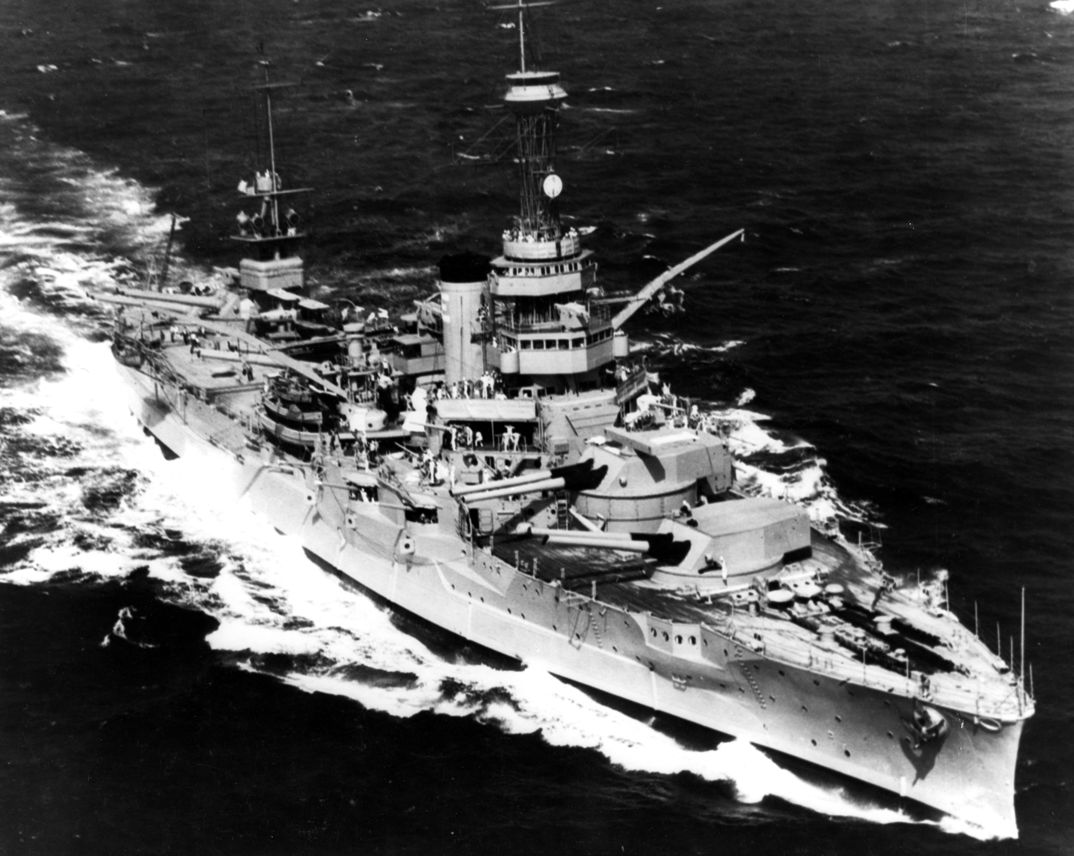
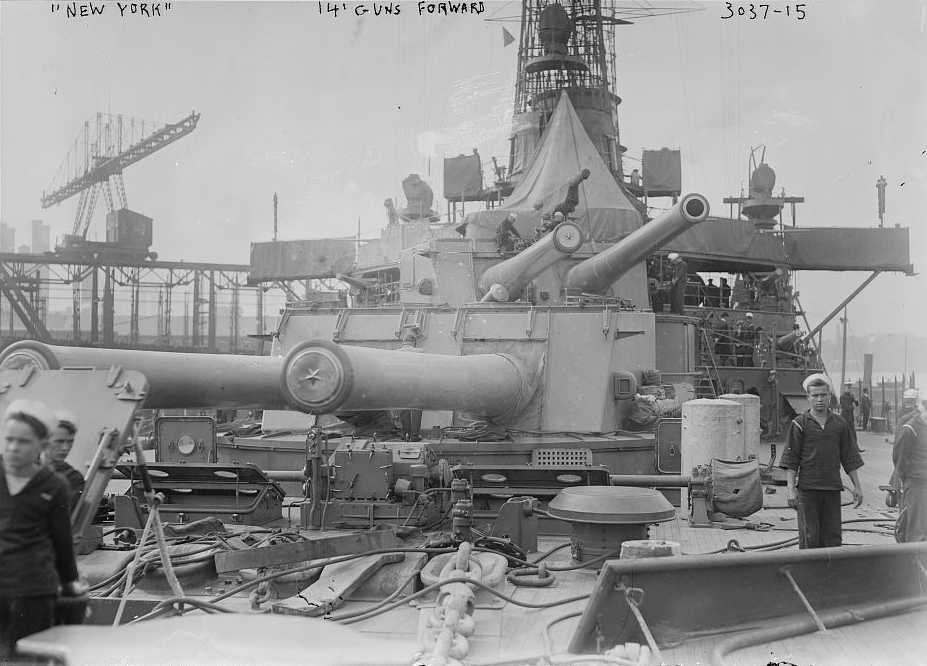
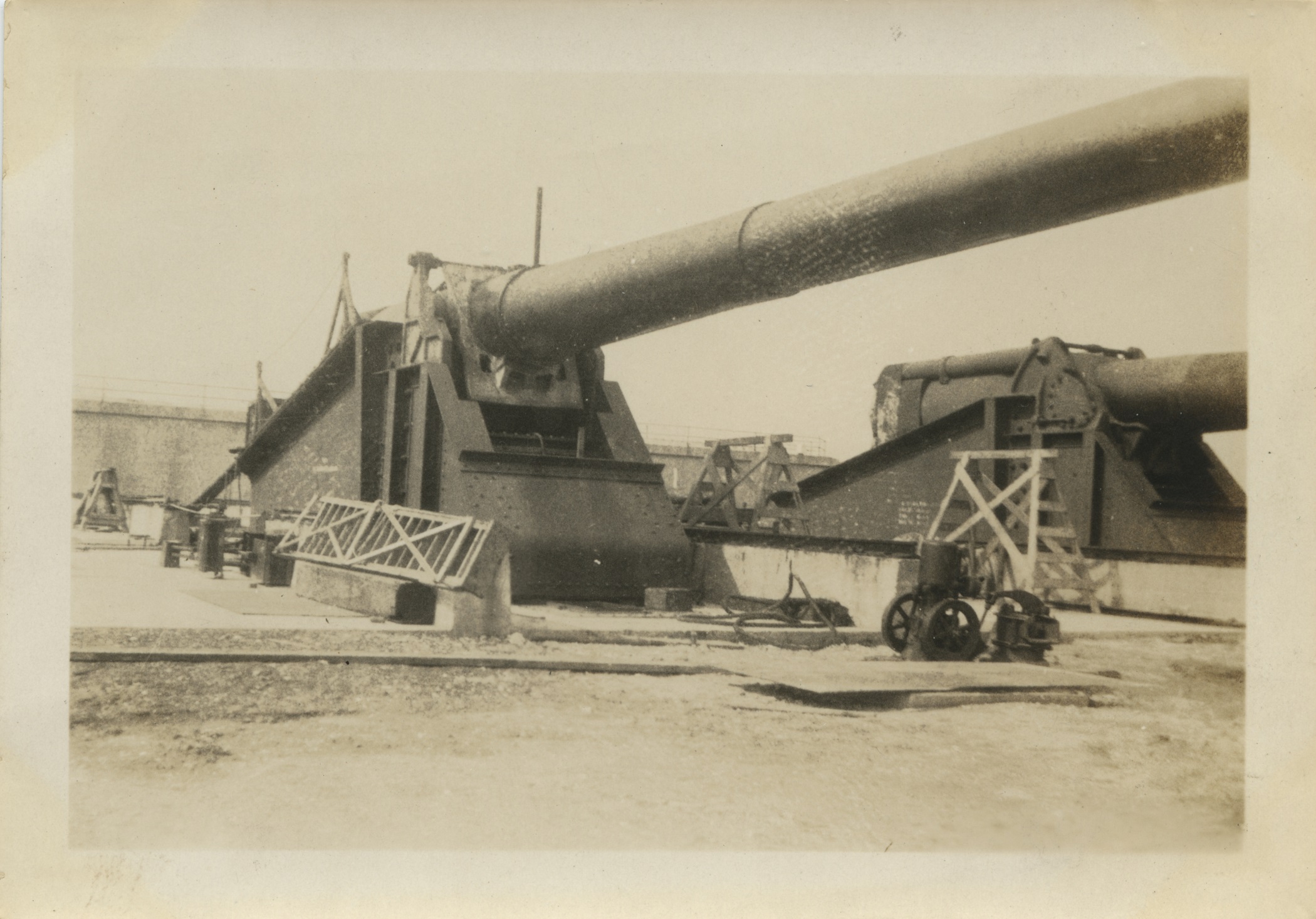
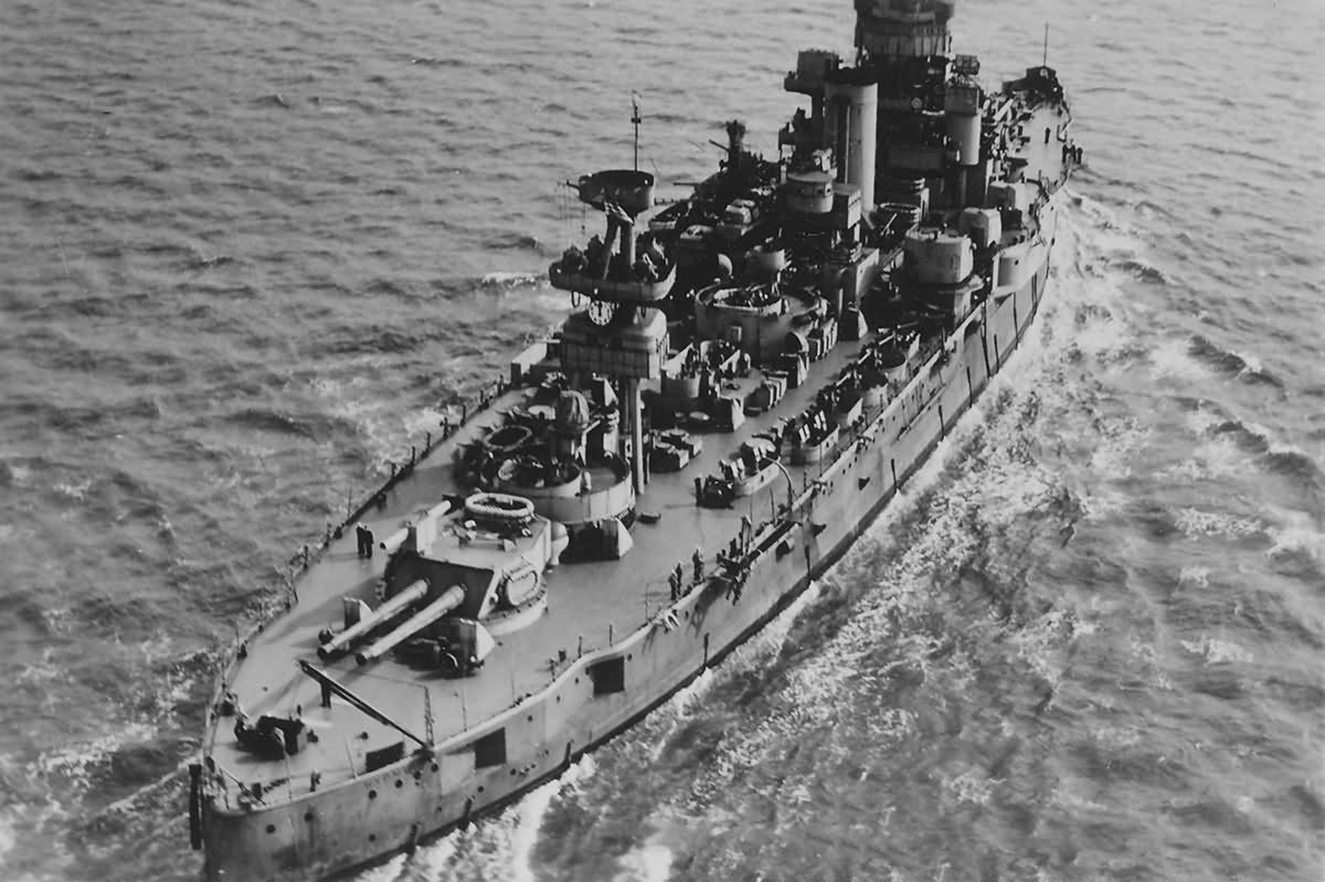

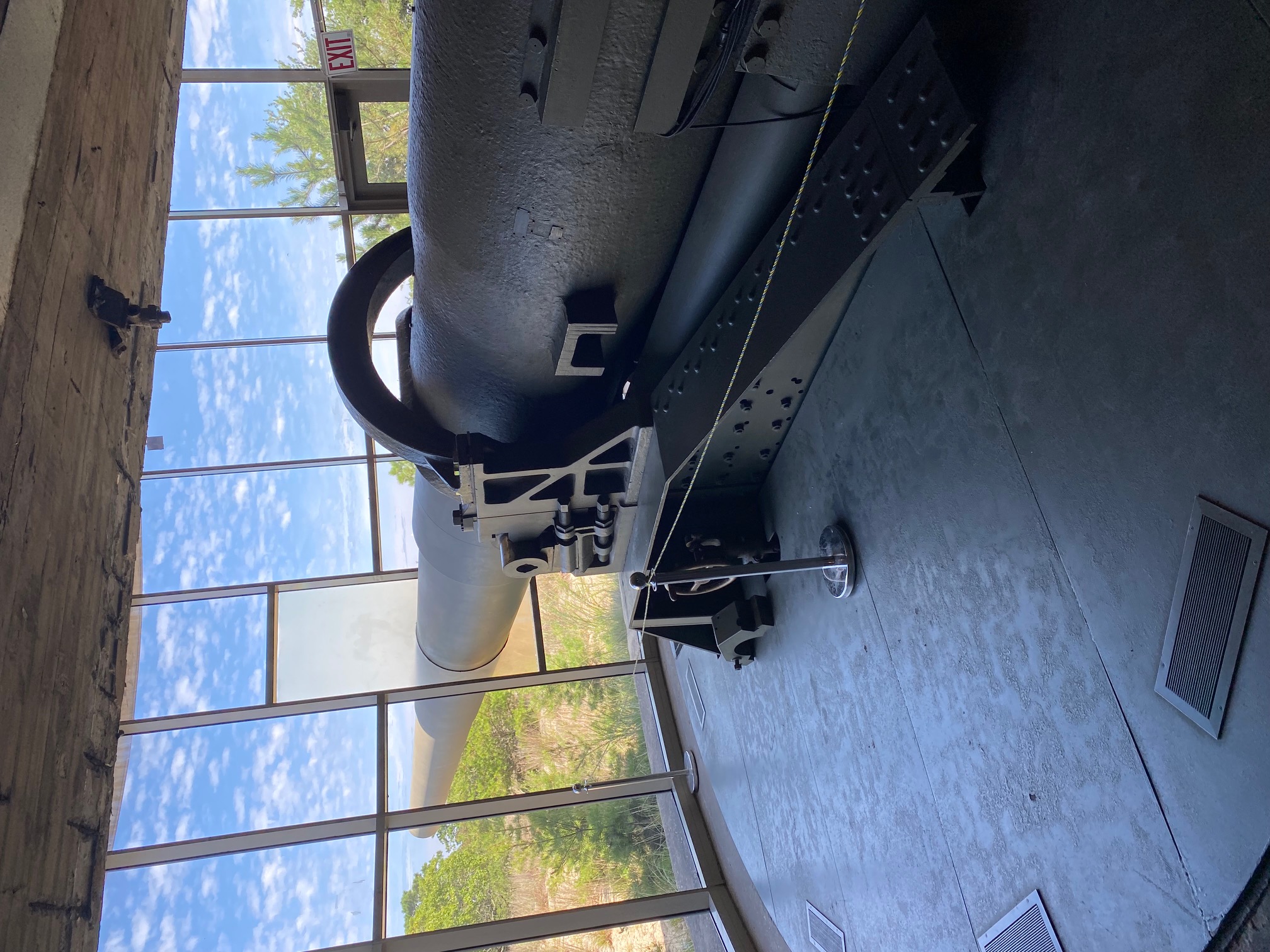
"Naval Weapons of World War Two" by John Campbell
"US Naval Weapons", "Naval Weapons of World War One" and "US Battleships: An Illustrated Design History" all by Norman Friedman
"A Treatise on Rifling of Guns" by Carl F. Jeansén
"Battleships: United States Battleships, 1935-1992" by W.H. Garzke, Jr. and R.O. Dulin, Jr.
---
"Range and Ballistic Tables 1935" by Department of Ordnance and Gunnery, U.S. Naval Academy
"Abridged Range Tables for U.S. Naval Guns - Ordnance Pamphlet No. 1188 - 13 June 1944" by Bureau of Ordnance (BuOrd), Department of the Navy
"U.S. Explosive Ordnance - Ordnance Pamphlet No. 1664 - May 1947" by Bureau of Ordnance (BuOrd), Department of the Navy
---
Special help from Leo Fischer and Nathan Okun
01 March 2008 - Benchmark
15 September 2009 - Added picture of bow turrets
06 December 2010 - Added Nathan Okun comments regarding the AP Mark 15 Mod 6 projectile design
04 May 2015 - Redid photographs of USS Arkansas and USS Wyoming
19 July 2016 - Converted to HTML 5 format
30 August 2018 - Reorganized notes
23 December 2018 - Added turret sketch
30 January 2019 - Minor correction
26 March 2021 - Added photograph of Mark 7 on the gunrange
23 November 2021 - Added photograph of gun at Fort Miles
23 February 2023 - Corrected chamber volume
25 March 2023 - Added time of flight and maximum ordinate to range table
21 May 2023 - Added note about USS Wyoming (AG-17) as a gunnery training ship
21 June 2023 - Added comment about Fletcher breech mechanism
31 August 2023 - Revised range tables
